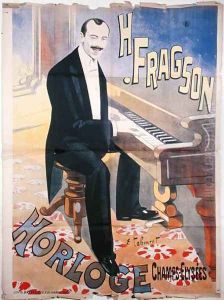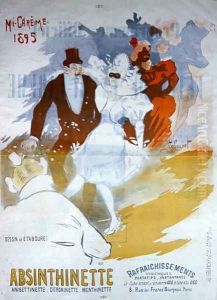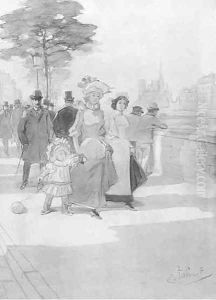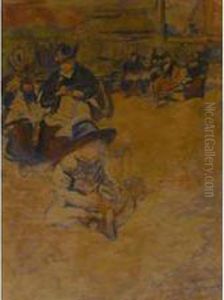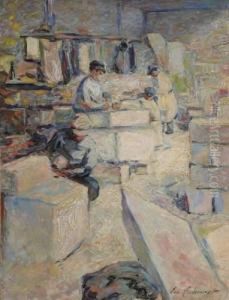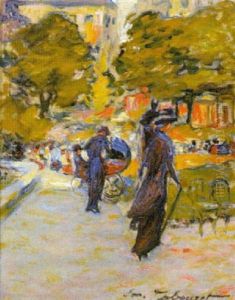Emile Tabouret Paintings
Emile Tabouret was a French artist born on March 16, 1863, in Paris, France. Throughout his life, he developed a reputation as a skilled painter, particularly known for his landscape and genre paintings. Tabouret studied under renowned artists such as Ernest Hébert and Jean-Léon Gérôme, both of whom were influential figures in the French academic painting tradition of the 19th century.
Tabouret's work was often characterized by its realistic portrayal of rural French life, capturing the daily activities of peasants and the serene beauty of the countryside. His approach to painting was traditional, with a meticulous attention to detail and a dedication to capturing the nuances of light and atmosphere. He was part of a generation of artists who bridged the gap between the traditional academic style and the emerging impressionist movement, which was gaining popularity during his lifetime.
Despite his talent and the quality of his work, Emile Tabouret did not attain the same level of fame as some of his contemporaries. Nevertheless, he exhibited regularly at the Paris Salon, an official art exhibition of the Académie des Beaux-Arts in Paris, which was the preeminent art event in the Western world at the time. His paintings received a warm reception from critics and the public alike, and he was awarded several medals for his contributions to French art.
Throughout his career, Tabouret remained devoted to the aesthetic values of the Beaux-Arts tradition, even as the art world around him began to embrace the more avant-garde styles of Impressionism and Post-Impressionism. He continued to paint until his later years, leaving behind a body of work that provides a valuable glimpse into the rural life of France during his era.
Emile Tabouret passed away on November 23, 1939, leaving a legacy as a painter who captured the essence of the French countryside with authenticity and care. Though not as widely known as some of his contemporaries, his work continues to be appreciated by art historians and collectors for its craftsmanship and historical value.
